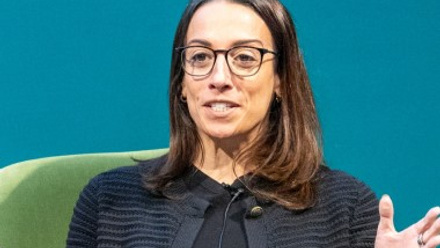Diane Rudge of DWP on how it is making wellbeing an integral part of workplace culture

Enhancing mental wellbeing is crucial to helping us to feel at our best, avoiding ill-health, increasing resilience and bosting performance – both in and out of work.
In late 2016, we set out our whole person approach to wellbeing through our Working Well Together strategy. This has education, prevention and early intervention at its core.
We identified mental wellbeing as our leading priority since mental health is our highest cause for sickness absence. We developed and implemented a range of innovative tools and services including a mental wellbeing toolkit, improved employer assistance programme services and delivery methods, a dedicated wellbeing website and interactive guidance for leaders that focuses on changes we can all make to embed a supportive wellbeing culture.
To help break the taboo and stigma around mental health we hold regular mental wellbeing ‘broadcasts’, live audio calls featuring inspirational personal stories and industry experts, which engage thousands of DWP colleagues. Additionally, our inclusion campaign encourages colleagues to talk about our differences and is helping to create an environment where everyone can be themselves at work.
To enhance the service we provide to the public, we have built mental wellbeing training into programmes for our customer-facing employees. We have developed a Wellbeing Capability programme, teaming up with our own professionals, such as work psychologists, to design and deliver broadcasts that support key business activity and offer colleagues additional wellbeing support through periods of change and uncertainty.
As the largest civil service department, we have had to be creative in how we influence culture and behaviours to make wellbeing an integral part of what we do. We have a growing network of more than 1,000 voluntary wellbeing advocates who are crucial in helping us engage colleagues all around the country in wellbeing-related activities, and in embedding our Working Well Together strategy at a local level. In addition, we have 800 trained Mental Health First Aiders and have committed to increasing our Mental Health First Aid community to reach parity with physical first aid by 2020.
By using digital solutions we are engaging colleagues and connecting more widely. Our social intranet platform features a Mental Health First Aid community and colleagues are also encouraged to join our Working Well Together social intranet group where they can chat about wellbeing issues, share information and best practice, and help promote new services. It’s now the second most popular social intranet group in our organisation.
While mental wellbeing is the golden thread running through all our activity, we are taking steps to build wellbeing principles into wider HR policies and processes and when implementing change programmes.
For example, our new People Performance system and one-to-one conversations are focused on people’s wellbeing, as well as their aspirations and development.
To ensure our actions are transparent and evidence based (and to secure buy-in from those who doubt the value of wellbeing), we have pioneered new ways of measuring workplace wellbeing.
Our absence data remains an important metric but it only tells us about employees who have taken time off through illhealth, and not about colleagues in work. So, we ran a wellness survey last year, the first of its kind among UK employers. Developed with the What Works Centre for Wellbeing, this diagnostic tool measures health, relationships, security, environment and purpose, all essential to workplace wellbeing. We had an incredible response with 30,000 colleagues participating. The findings are helping us identify areas where we are doing well and where we may need further improvement.
On the back of the survey results we have drawn up a series of recommendations endorsed by the DWP’s executive team. The results have enabled us to further drive culture change and accountability for workplace wellbeing. They have also given us a baseline score for wellbeing which we can work to improve on in future years.
At the DWP we have made wellbeing a priority for all. We are helping everyone to be themselves and thrive both at work and home. It’s taking us a step closer to fulfilling our aim of being a leader in workplace wellbeing.
The author is Diane Rudge, Head of Wellbeing, DWP.




